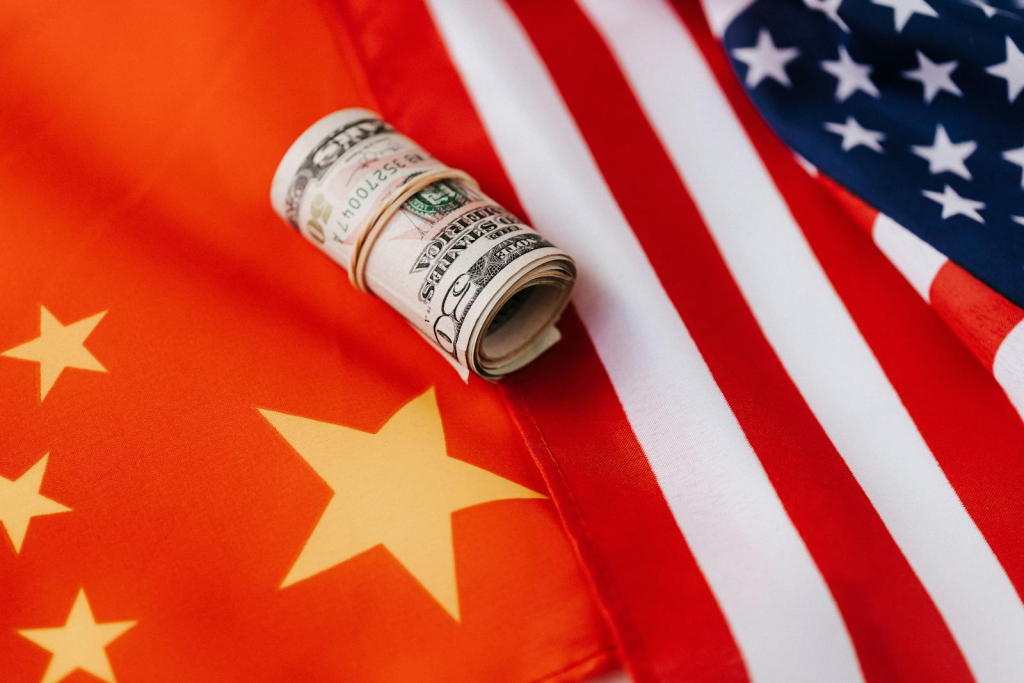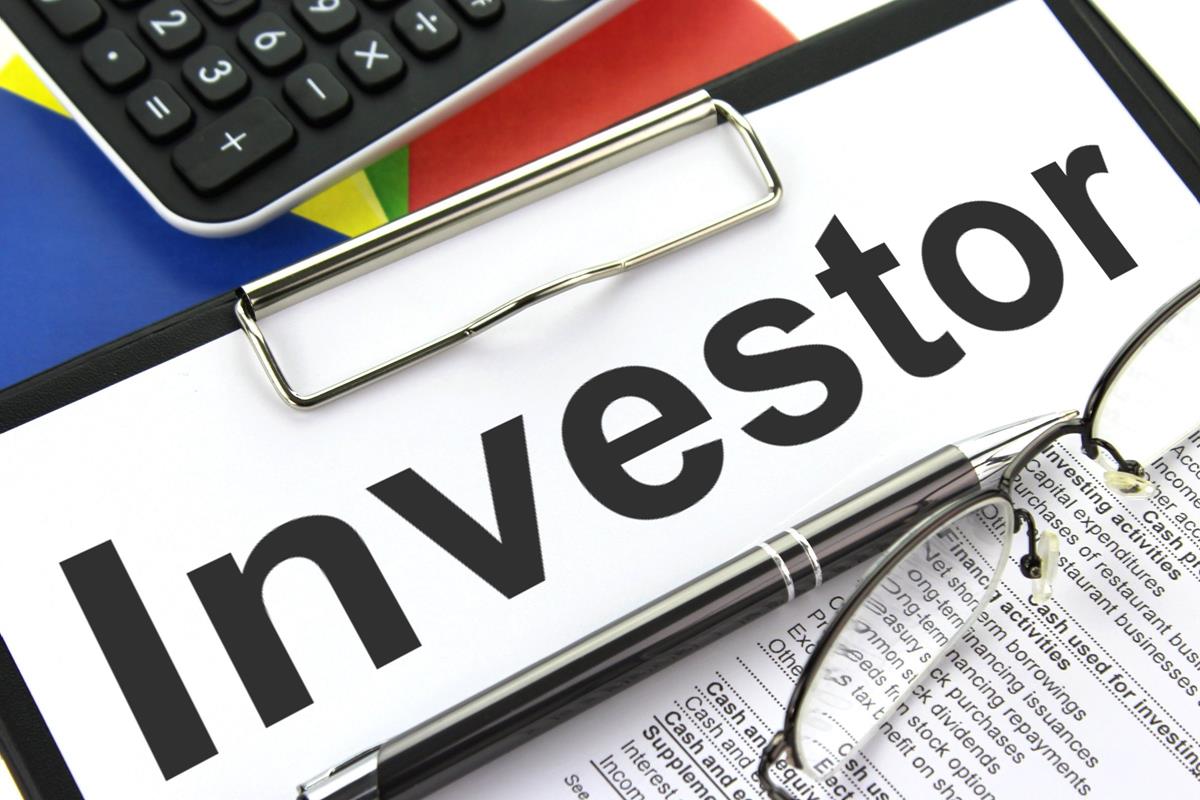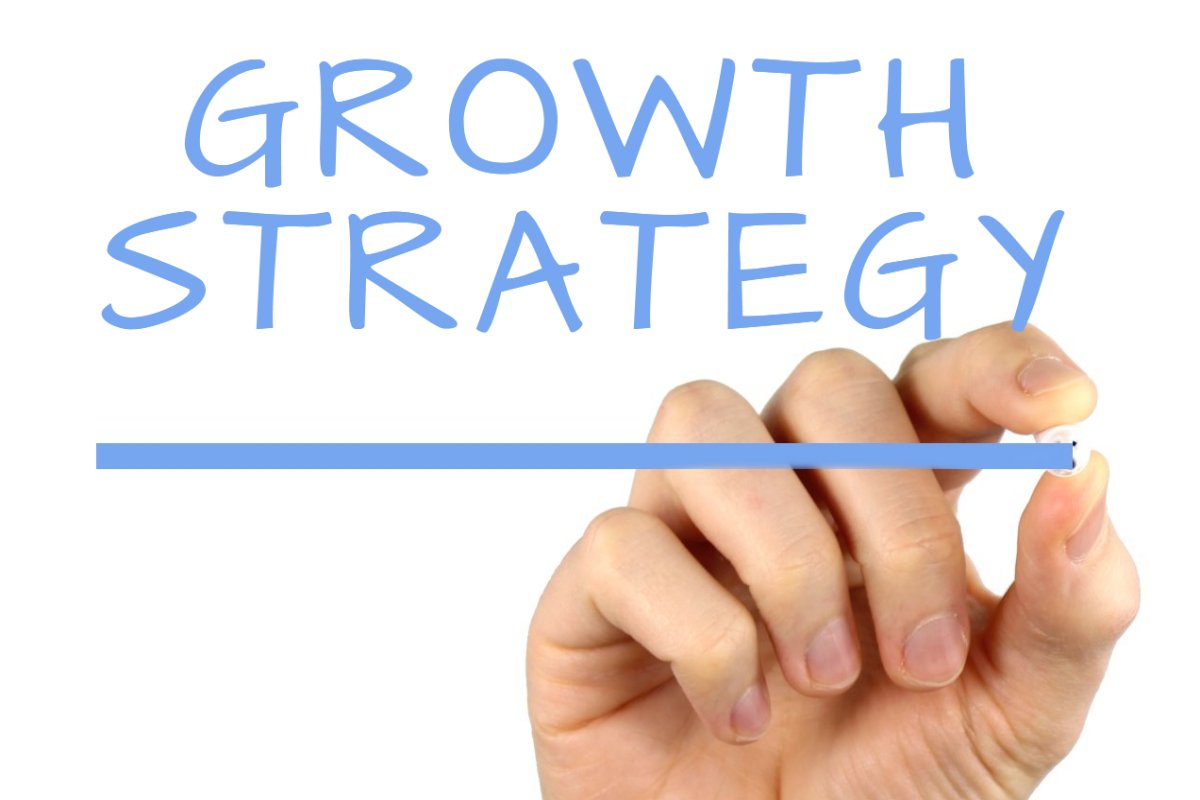
oubini’s Warning: China’s Economic Challenges and Global Market Risks
Nouriel Roubini’s stark warnings about China’s economic challenges and potential “economic war” with the U.S. paint a daunting picture of global market risks. With China’s growth trajectory slowing to a mere 3% and trade tensions intensifying, his insights underscore the volatility ahead.
Yet, paradoxically, the 2023 market surge—unpredicted by many economists—reveals a crucial truth: amid macroeconomic chaos, strategic investing in individual companies can outweigh market-wide predictions.
Looking East, Roubini also addressed the significant structural challenges facing the Chinese economy, arguing that change is necessary. The pace and nature of this change are a source of concern for him.
He described China’s growth trajectory, which saw around 10% for three decades before slowing to roughly 7% pre-COVID. Post-COVID, growth is “barely 5%,” and Roubini suggested that the potential growth for China might realistically “hit only 3%.”

The prospect of a trade or even a full-fledged “economic war” with the United States, particularly under potential future administrations, could necessitate dramatic shifts in China’s economic model. If tariffs and economic pressure from the U.S. intensify, Roubini argued, China’s growth model, based on increasing supply without commensurate increases in domestic demand, “just won’t work.” However, he observed that “For now, they are resisting [change].”
Relatedly, Roubini mentioned that commodity prices experienced a significant decline of 60% between 2010 and 2020, influenced by the weak economic recovery following the GFC. This decline was further exacerbated during the COVID-19 pandemic.
Interestingly, this situation might not be uniformly negative globally. Roubini noted that this trend “may be good news for countries that are commodity exporters like Australia,” although he did not elaborate further on the specific reasons why this would be beneficial.
Read more about: A $5.5 Trillion Savings Wipeout and Wall Street’s Big Bet Raise Risks for the US Economy

The Limits of Macro Forecasting: 2023’s Market Surge vs Economic Complexity
It is worth noting that economic forecasting is inherently challenging, as evidenced by the fact that many well-known economists, including Roubini, did not see the surprisingly strong market performance of 2023 materializing as it did. Unpredictable elements like geopolitical developments, unexpected economic swings, and global crises constantly impact market dynamics.
As recently as November 2023, Roubini was quoted describing the period as a “mega-threatened age” where a “bloodbath” loomed for investors, asserting, “This bloodbath is likely to continue.” He also spoke more broadly, noting a “growing recognition that not only the global economy but also human survival is at risk.
Reflecting on why his earlier predictions regarding a massive recession hadn’t fully materialized up to that point, Roubini attributed it partly to “luck and part of it was good economic policy.” He highlighted that three negative aggregate supply shocks experienced during COVID—disruptions to labor, goods, and services supply chains, the Russian invasion of Ukraine, and China’s zero-COVID policy—”were reversed.” These shocks, had they persisted, would have reduced growth and increased inflation.
Despite the worries about inflation and the Federal Reserve’s interest rate hikes throughout 2023, the U.S. economy managed to avoid the slump many anticipated, at least for that year. The stock market, contrary to many mainstream predictions, actually soared in 2023.
Read more about: 2025 Retail Shakeup: Major Chains Close Stores, Adapt Strategies

This rally was fueled by factors such as easing inflation, growing hopes for a potential Fed pivot on interest rates, strong corporate earnings performance, and the unexpected resilience shown by the economy. Furthermore, geopolitical risks, though present, were seemingly managed in a way that minimized their impact on markets.
This divergence between widespread pessimistic forecasts and actual market outcomes in 2023 underscores the complexity and inherent difficulty of predicting broad market movements with certainty. While macro predictions offer valuable insights, their accuracy can be limited by numerous unpredictable factors and the intricate dynamics of economic systems.
Given the acknowledged challenges in forecasting overall market direction, some experienced voices advocate for an alternative perspective: focusing investment efforts on individual companies rather than attempting to time or predict the broader market. Jim Osman, a finance expert with extensive experience, encapsulates this approach with the simple philosophy, “Buy Companies, Not Markets.
This perspective suggests that the focus should shift from the often-enigmatic behavior of the market as a whole to the fundamentals and prospects of specific businesses. Instead of viewing the market as an activity only “reserved for the intelligent” or something that has “nothing to do with” the average person, this approach encourages deliberate, researched investment decisions, much like the thoughtful process one might apply to purchasing a major household item.
Read more about: Brewing Industry in Flux: AB InBev and Molson Coors Navigate RTD Expansion and Historic Closures

Osman notes that people often dedicate considerable time and effort to researching purchases like a fridge—examining options, reading reviews, assessing reliability, and comparing prices and values. He contrasts this with the approach of some investors who expect “enormous gains in the short term” with “little effort” in the stock market, a belief he states “cannot be further from the truth.
From his decades in finance, Osman finds that when asked “What do you think of the market?”, his consistent answer is “I don’t think much about it.” He explains his focus lies instead “on buying good-quality companies I can analyze, not random markets that I cannot control.” This forms the basis for several compelling reasons to invest in companies rather than attempt to predict broader market moves.
One key reason highlighted is the potential for Individual Companies to Offer Higher Returns compared to simply tracking the market average. The core of this strategy is recognizing that not all equities perform identically. By undertaking a comprehensive study, investors have the opportunity to identify businesses with strong growth prospects or undervalued assets poised for significant appreciation.

Strategic Investing: 4 Core Advantages of Focusing on Companies
This in-depth examination allows investors to delve into a company’s fundamentals. This process involves scrutinizing financial statements, understanding the nuances of the business strategy, evaluating the competency and vision of the management team, and assessing the company’s competitive standing within its industry. Such detailed study, the argument goes, can pinpoint organizations likely to achieve growth through means such as market expansion, introducing innovative products, venturing into new geographical areas, or implementing beneficial organizational changes, all of which can contribute to increased stock values.
Furthermore, investing in individual companies allows savvy investors to exploit market inefficiencies. Sometimes, a company’s true value may be underestimated by the market due to transient short-term factors, prevailing negative sentiment, or business considerations that the wider market has simply overlooked. These discrepancies create opportunities for informed investors to acquire these stocks at a discount, potentially profiting significantly when the market eventually corrects its valuation.
It is acknowledged that focusing on individual equities inherently carries greater risk and demands more time and expertise compared to investing in broad market indexes. However, for those willing and able to undertake the necessary research and accept measured risks based on informed decisions, this approach holds the potential for yielding better profits and outperforming the general market, particularly during periods where certain sectors or specific businesses are thriving while others lag.
Another powerful advantage is Greater Control Over Investment Choices. By selecting specific companies, investors can tailor their portfolios precisely to align with their unique personal criteria and investment objectives. This personalized approach enables investors to strategically focus on sectors where they possess existing expertise or where they anticipate significant future growth.

They can conduct thorough assessments of a company’s financial health and consciously direct their capital towards businesses they believe have genuinely promising futures. This includes the ability to factor in a company’s corporate governance practices, aligning investments with personal values. This method also presents opportunities for generating income through investments in equities that distribute dividends.
This ability to customize the investment approach according to an individual investor’s specific risk tolerance and financial goals not only enhances the potential for achieving desired financial returns but also facilitates more sophisticated risk management strategies. This heightened sense of agency empowers investors to construct a well-rounded portfolio that authentically reflects their individual financial objectives and leverages their personal insights, thereby increasing the likelihood of achieving positive and profitable investment results.
There is also a significant Opportunity To Capitalize On Knowledge And Research. For individuals who possess extensive knowledge or practical experience within a specific industry or field, investing in individual businesses offers a distinct and powerful advantage. This specialized knowledge allows investors to make significantly better-informed selections by leveraging their deep awareness of market trends, emerging technologies, and the intricate dynamics of that particular industry.
Read more about: Retailers Lock Down: The Fight Against Shoplifting Reshapes Shopping Experience

Catalysts Unleashed: How Triggers Reshape Stock Valuations
Crucially, investors with an extensive understanding of a particular business landscape can often identify new trends and technological developments ahead of the broader market. Armed with this foresight, they can strategically invest in companies that are well-positioned to capitalize on these shifts. This can lead to substantial gains when the market eventually recognizes and catches up to these trends. Additionally, their specific knowledge gives them a keen eye for finding potentially cheap or undervalued stocks, as their insights can help uncover a company’s untapped potential or mispriced assets.
Furthermore, having an in-depth familiarity with a certain market segment is incredibly helpful when evaluating a business’s competitive edge. This information is essential for accurately determining which companies possess long-term viability through robust business models and defensible competitive positioning. This specialized knowledge is also invaluable when assessing potential dangers, as it enables investors to proactively avoid businesses that are particularly vulnerable to problems or disruptions unique to their sector. Combining one’s personal knowledge with ongoing, focused research in a specific field results in a highly informed, strategic investment approach. The tangible outcomes of this include better stock selection, more educated risk management decisions, and ultimately, improved overall investment results. This strategy holds the potential to greatly enhance the chances of achieving greater returns and securing long-term investment success for investors who cultivate expertise in specific sectors.
Another benefit is the Flexibility to Manage Risk. Investing in individual companies provides investors with the adaptability to fine-tune their portfolios according to their current risk tolerance and evolving investment goals. This approach allows investors to deliberately and carefully choose companies with varied risk profiles, ensuring that their portfolio structure aligns with their financial objectives.
For example, investors can strategically combine relatively steady, large-capitalization companies with potentially more volatile, high-growth small-cap companies. This diversification across different sectors and company sizes is a key method for reducing the risk of significant losses, as different equities tend to react dissimilarly to broader market fluctuations. Including companies from diverse geographical regions can also help mitigate risks specifically tied to a particular country or region, contributing to a more stable overall portfolio structure.
Read more about: Viral Video Prompts Debate Over Safety Training at Lowe’s

This method also empowers investors with the ability to actively monitor their holdings and make adjustments swiftly in response to changes in market conditions or fluctuations in a company’s individual risk profile. If the risk associated with a particular company rises beyond an investor’s comfortable level, they have the option to sell those shares. This proactive management ensures that the portfolio remains within the investor’s defined risk appetite and aligns with their long-term investment horizon.
Finally, investors can realize Direct Benefits from Company Growth And Dividends. By choosing to invest directly in specific companies that demonstrate strong fundamental health and are on promising growth trajectories, investors connect their investment choices more directly to the financial results of those businesses.
When investors successfully select growth companies that expand their market reach, launch successful new products, or achieve operational efficiencies that boost profitability, they directly gain from the resulting increases in the company’s stock value. Companies that manage to outperform the broader market offer the potential for larger returns on investment and can provide the satisfaction derived from selecting a winning stock after thorough research and analysis.
Furthermore, many established corporations regularly distribute a portion of their profits to shareholders in the form of dividends, providing a steady stream of income. This aspect of investing in individual companies can be particularly appealing to investors seeking passive income, such as those in retirement. Dividends can also offer a degree of return even during periods of market downturn, providing some cushioning against volatility. Over the long term, the combined impact of capital appreciation (stock value increases) and dividend income can compound powerfully. The long-term financial advantages can be further enhanced by reinvesting those dividends back into purchasing more shares of the company.

As an additional layer to an investor’s strategy, it is crucial to recognize that not all stocks that appear cheap are guaranteed to rise in value. A critical element to look for is a “catalyst”—something that can propel a stock from being merely cheap to being valued more appropriately or even becoming expensive in the market’s eyes.
A catalyst acts as the bridge between a stock’s current trading price and its underlying intrinsic value. It is an event or development that triggers the market to re-evaluate a company’s genuine worth. Even if a company possesses solid fundamentals and appears undervalued, its stock price can remain stagnant for extended periods without a specific trigger event.
Positive financial surprises, such as unexpectedly strong earnings reports, the successful launch of a significant new product, internal company restructurings aimed at improving efficiency, or changes in senior management, can all serve as potent catalysts. These events have the power to fundamentally alter investor perception and significantly enhance interest in a company’s stock, leading to a reassessment of its valuation.
Ultimately, a catalyst can relatively quickly shift a stock’s price to more accurately reflect its underlying worth. For investors who have patiently identified and invested in fundamentally sound but undervalued stocks, this market adjustment, often spurred by a catalyst, is typically necessary to unlock the value they saw. Without such triggers, even fundamentally strong firms may remain stuck at reduced price levels, failing to deliver expected value and returns to their investors.
Read more about: ‘It Is What It Is’: Inside the Tech CEO Push to Make Employees ‘Step It Up’ Or Risk Falling Behind

So, while the warnings from voices like Nouriel Roubini about potential market turmoil and significant future losses serve as a crucial reminder of the macroeconomic forces at play and the risks inherent in the current environment, there is also a powerful case to be made for navigating these turbulent waters by focusing on the foundational elements of investing.
Instead of being paralyzed by the scale of potential market-wide declines, the alternative perspective suggests empowering oneself through diligent research and informed decision-making regarding individual businesses. By understanding the specific companies one invests in, seeking out those with solid fundamentals, clear growth paths, and potential catalysts, investors can aim to build resilience and pursue returns irrespective of the broader market’s unpredictable swings.
In an age defined by polycrises and megathreats, the journey through financial markets doesn’t have to be solely about bracing for the storm. It can also be about identifying and nurturing the individual seeds of growth within the economic landscape, cultivating a portfolio one carefully chosen company at a time, and leveraging knowledge to find opportunity amidst uncertainty. It’s a call to action for investors to become active participants in understanding value, rather than passive observers swept along by the tides of market sentiment.
Related posts:
‘Dr. Doom’ Nouriel Roubini says a severe recession will cause stocks to drop 25% and zombie companies are in danger
Dr Doom: How Nouriel Roubini is thinking about markets in a ‘polycrisis’
Most Well-Known Economists Got It Wrong In 2023, Here’s Why



